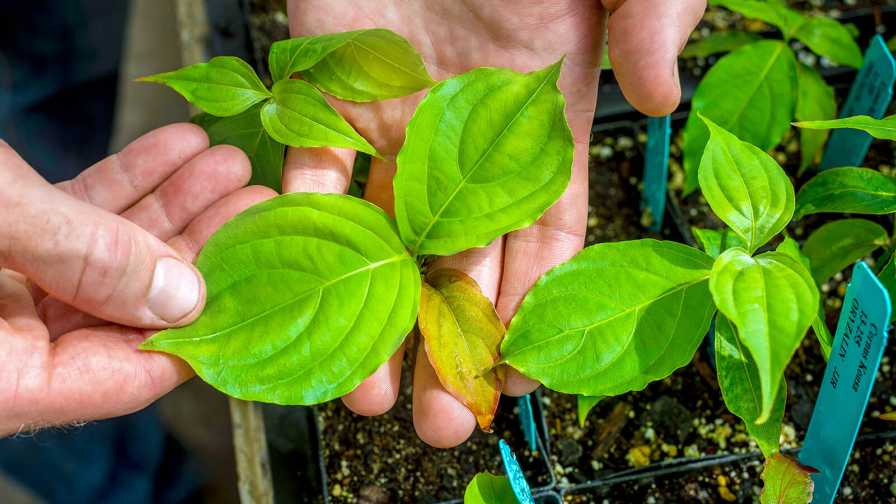Disease Management Strategies

Both Daughtrey and Hausbeck will be discussing plant diseases, a topic they recently discussed with Greenhouse Grower as the February 25-27 conference approaches.
Late blight made the most headlines nationally in 2009, particularly in the Northeast where the weather was especially wet. Is there an effective late blight management program growers could employ for 2010?
Don’t produce tomato transplants in a greenhouse where tomatoes are grown as a production crop. Destroy any potato cull piles near the greenhouses–remember this disease affects tomatoes and potatoes, as well as some Solanaceous weeds. Keep the greenhouse environment as dry as possible, which includes watering at a time of day when the foliage can dry quickly, keeping the relative humidity below 80 percent through heating and venting (as appropriate), and circulating the air with fans. Inspect the crop frequently (at least twice each week) and look at the plants closely.
Using protectant fungicides such as a combination of mancozeb plus copper is useful for a range of tomato diseases, including late blight. Many copper formulations are available to greenhouse growers for use on tomatoes. They include Camelot, Champ and Kocide, to name a few.
Mancozeb is available for use on greenhouse tomatoes as Dithane DF Rainshield, Dithane F-45, and Dithane M-45. If the weather becomes especially favorable for late blight and/or the disease is detected in the region, additional late blight specific fungicides could be used on greenhouse tomatoes and include the following: Ranman, Tanos, Curzate (except California), Gavel, Catamaran and Heritage.
Others may be available later this spring and include FenStop and Revus, which are in the process of label changes to allow their use on tomato transplants.
Are there any new or revised disease management strategies for downy mildew on coleus and powdery mildew on verbena?
Downy mildew on coleus hasn’t gone away. The quality of coleus displays at retail and in gardens continues to be dragged down by this disease. Growers who want excellent quality in their coleus must quit turning a blind eye to downy mildew and really crack down on it with drier cultural conditions and a fungicide program.
Mancozebs are effective against the disease as protectants, and FenStop and StatureSC are some of the fungicides that give strongly effective systemic control.
Powdery mildew on verbena has been much less common in the past two springs in the Northeast. Some of the most susceptible cultivars have been taken off the market, and this may have helped reduce the inoculum available to start epidemics in the greenhouse. Propagators are also more aware of the disease and are using fungicides wisely to provide cleaner plants to growers who finish verbenas for sale.
Growers should keep scouting for powdery mildew on (especially the lower leaves of) verbenas, but unless they are propagators supplying the rest of the industry, they may not need to use fungicides for powdery mildew control as long as they avoid highly susceptible varieties.
What are some of the online resources you use for diagnosing diseases, Margery?
1. Mostly, I like to go into Google, click on images and type in the name of the plant and the disease I think the plant might have to see if the images that pop up fit with the symptoms I am faced with. Sometimes, this works like a charm; sometimes you get nothing.
2. If I want to know something precise like exactly which powdery mildew fungi have been reported on verbena from all over the world, I go to a database maintained by expert mycologists at the USDA Laboratory of Systemic Mycology and Microbiology in Beltsville, Md.
If you type in the name of a plant species, you will get an amazingly long list of all the fungi that have been reported on that plant from all over the world. This would be a little scary for a grower to do. But it’s a great tool for a plant pathologist.
3. For images without narration, check out the Insect and Disease ID and Diagnosis Guide at GreenhouseGrower.com. You can click on a symptom type and get an array of illustrations of common greenhouse diseases.
4. Another place a grower can learn about symptoms of some important greenhouse crop diseases is to check out the short presentations (baby PowerPoints with audio) found at FloriCast. This is an ever-accumulating resource that will help growers double check their suspicions when facing a disease, insect injury, nutrient deficiency or other physiological disorder.
Topics available thus far include diagnostic help on downy mildew, Botrytis, nematodes, Xanthomonas bacterial blight on geraniums, fungal and bacterial leaf spots, powdery mildew, poinsettia diseases (root rots, bacterial soft rot, Phytophthora canker, Botrytis blight and scab) and impatiens necrotic spot virus (INSV) on New Guinea impatiens.
About Pest Management Conference: For more information on Pest & Production Management Conference, presented by Society of American Florists and Greenhouse Grower, visit PestAndProductionManagement.com.










